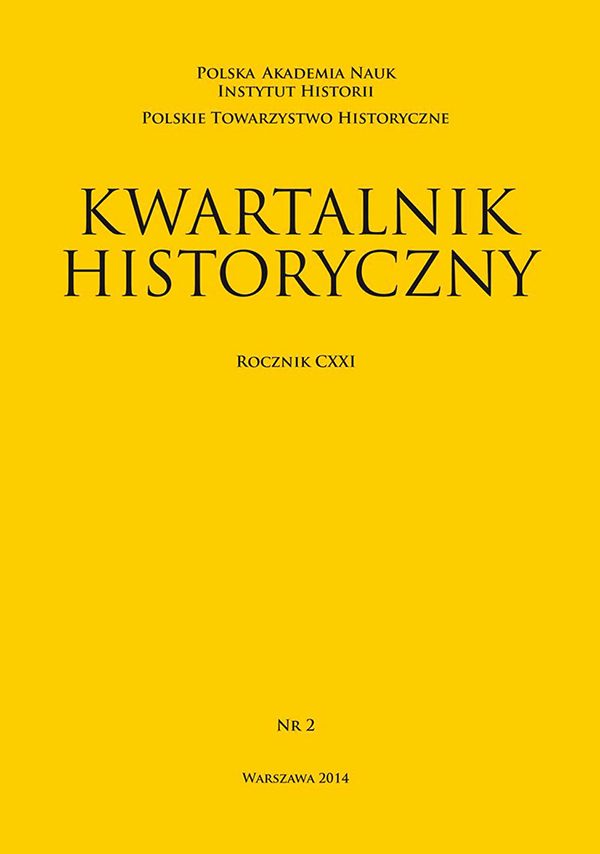Kierownictwo Polskiej Partii Robotniczej (1945–1948) – portret historyczno-socjologiczny
DOI:
https://doi.org/10.12775/KH.2014.121.2.02Abstrakt
The Leadership of the Polish Workers’ Party (1944–1948) – a Historical-Sociological Portrait
The leadership of the Polish Workers’ Party (PPR) was composed of 21 communists representing a different educational background and social roots. The dominating feature was steadfast ideological involvement in the communist movement at the time of the Second Republic and then during the Second World War. Members of the Political Bureau and the Secretariat of the Central Committee of the PPR were recruited from the Central Bureau of Polish Communists in the USSR, the political apparatus of the Polish Army, and leaders of the underground PPR. All represented a single generation of Polish communists although their roads towards communism varied.
The “émigrés”, who in 1944 came from the Soviet Union, had been in the Party for long, graduated from Comintern schools, and had to a greater degree succumbed to a Soviet way of thinking. Despite their “errors” and noticeable negative personal traits they generally enjoyed the trust of the Soviet comrades, which ensured predominance and key positions in the Political Bureau. Among the “natives” (members of the underground PPR) only Władysław Gomułka achieved a strong standing. On the other hand, the importance of inner divisions should not be exaggerated. Personal relations played a role greater than different stands and opinions concerning political tactics. Despite certain animosities, for almost four years the “émigrés” and the “natives” collaborated relatively harmoniously in consolidating the people’s government. Nonetheless, when in 1948 Moscow demanded settling accounts with the inner enemy, a conflict proved to be unavoidable. Ultimately, the majority of the “natives” were deprived of power, although in 1956 they reappeared on the political scene. To the mid-1960s members of the analysed group constituted the main core of the elite of power in the People’s Republic of Poland.Stahování
Publikováno
Jak citovat
Číslo
Sekce
Stats
Number of views and downloads: 708
Number of citations: 0



